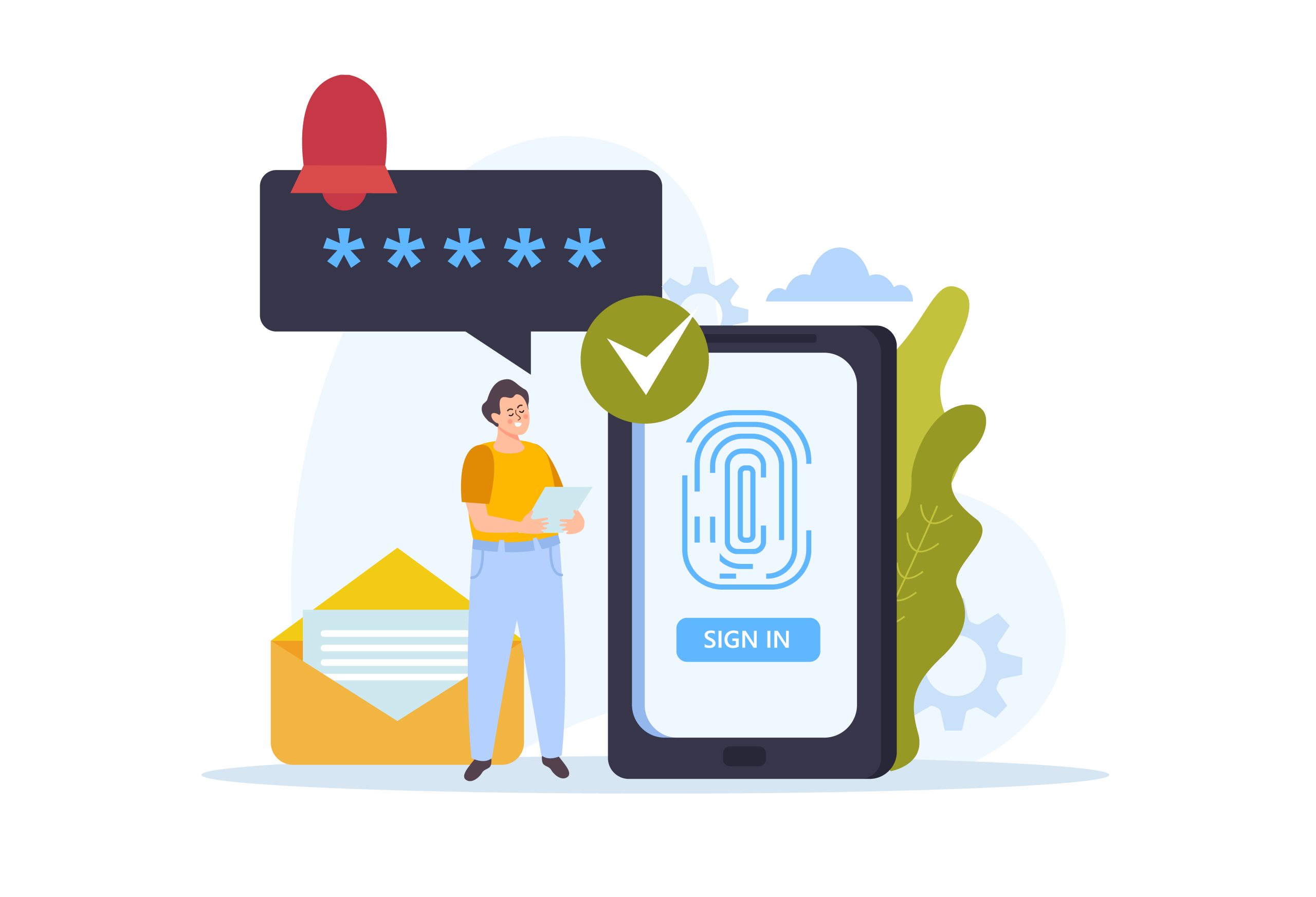User authentication is a critical aspect of any digital application. One-time passwords OTP API have become a popular way to verify user identities, offering an extra layer of security.
This article is to help you set up an OTP API, breaking down the process into easy-to-understand steps. If you are a developer, IT professional, or someone looking to enhance security measures, this guide will walk you through everything you need to know.
Why is it important to implement the OTP API?
OTP API are essential in securing applications and protecting users from unauthorized access. Here is a deeper look at why you should consider implementing OTPs in your app or service:
- Enhanced security: OTPs are an additional layer of protection against harmful activities such as phishing and credential theft. Even if a hacker can access a user’s password, the OTP sent to their phone or email ensures that only the rightful user can access the account. Since OTPs are unique to each session and expire quickly, they provide dynamic security. If someone tries to use an old or stolen OTP, it will not work, making it harder for attackers to gain unauthorized access.
- User convenience: While passwords can be cumbersome for users to remember and manage, OTPs provide a quick and straightforward solution. Instead of remembering a complex password, users only need to access their phone or email to retrieve the OTP.
- Flexible authentication methods: OTPs can be sent through different channels, such as SMS, email, or push notifications. This flexibility allows businesses to choose the best method for their user base. For example, SMS-based OTPs are commonly used for mobile apps, while email OTPs might be more suited for web applications.
- Compliance with security regulations: Many industries have specific regulatory requirements for authentication and data protection, especially in sectors like finance, healthcare, and e-commerce. OTPs help ensure compliance with these regulations by adding an extra layer of verification, often required to meet standards like two-factor authentication (2FA) and multi-factor authentication (MFA).
What you need before starting an OTP API implementation
Before implementing an OTP API, there are a few necessities:
- Programming skills: Basic knowledge of coding in Python, JavaScript (Node.js), or PHP. If you are new to programming, consider taking a short course or reviewing some basic tutorials to get started.
- Development environment: Ensure you have the necessary development tools (such as Python or Node.js) on your computer. Setting up your environment ensures you can run the necessary commands, install dependencies, and test your code.
- OTP provider account: Register with an OTP provider, such as Arkesel, and obtain your API credentials. Depending on your needs, providers typically offer various plans, such as a pay-per-use model or a monthly subscription.
- Internet Connection: An active internet connection is essential for testing and sending API requests. Without an active connection, communication between your application and the OTP provider’s server will be disrupted, preventing the OTP process from functioning.
Step 1: Choose an OTP service provider
Selecting an OTP provider is the first step. Different providers offer unique benefits, so consider your specific needs:
- Arkesel: Known for being user-friendly and straightforward, Arkesel offers a simple API with clear documentation, making integrating OTP functionality into your app accessible.
When choosing a provider, also consider the following:
- Pricing: OTP providers charge per message sent, so choose one that offers competitive pricing. Some providers may offer free trials or many free OTPs to help you test the service before committing.
- Scalability: If your app expects to grow, choose a provider that can scale with you. Look for one that supports high-volume OTP delivery without compromising speed or reliability.
- Global reach: If you expect users from different countries, ensure the OTP provider can deliver messages internationally, especially if your application will be used globally.
- API documentation: Clear and well-maintained documentation is crucial for integration. Check that the provider’s documentation is comprehensive and includes examples and tutorials to help you get started.
Step 2: Obtain API keys
To connect your application to the OTP service, you need an API key or token:
- Log in to your account on the chosen OTP provider’s website.
- Locate the API section on your dashboard and generate an API key.
- Store the API key securely, allowing your application to interact with the OTP service.
Tip:
Never hard-code your API key directly into your code. Instead, use environment variables or a secure vault to store your keys. It helps protect your credentials from being exposed if your code is shared publicly or stored in version control systems.
Step 3: Set up your development environment
Depending on the language you are using, there are some basic steps for setting up your environment:
For Python:
- Install the requests library. This library makes it easy to send HTTP requests and simplifies interacting with APIs and retrieving data from external services.
For JavaScript (Node.js):
- Install axios, a popular library for handling HTTP requests. Axios helps send requests and handle responses, making connecting your application to external APIs easy.
For PHP:
- Ensure cURL is enabled. cURL is a library used for making HTTP requests in PHP and is essential for connecting your application to the OTP provider’s API. These libraries will help you request the OTP provider’s API and handle responses, which is critical for sending and verifying OTPs efficiently.
Step 4: Send an OTP code
Once your development environment is set up, you can integrate the code to send OTPs. Sending an OTP involves connecting to the API, passing the necessary parameters (such as the recipient’s phone number or email), and handling the response. To send the OTP, you typically need to:
- Specify the recipient: Provide the recipient’s phone number or email address to ensure the OTP is sent to the correct person.
- Pass your API key: Include your API key in the request to authenticate and connect to the provider’s API.
- Define the message: This includes the OTP, usually a random, time-sensitive code.
- Monitor the response: Check the API response to confirm that the OTP was successfully sent. This is usually provided as a status code (200 for success, 4xx, or 5xx for errors).
Step 5: Implement OTP verification
Verification ensures the user’s input matches the generated OTP. This step is essential for completing the authentication process and confirming that the user requesting access is the account’s rightful owner.
- Capture user input: Your application should prompt users to enter the received OTP. This can be done through a simple form or a modal window.
- Send the verification request: Use the verification endpoint provided by the OTP service, passing the OTP entered by the user and the recipient’s contact details.
- Handle the response: After sending the verification request, check the response from the API. If the OTP is correct, the user will be granted access; if not, the user should be prompted to try again.
Benefits of setting up an OTP API for authentication
The benefits of using OTPs for authentication include:
- Improved security: OTPs defend against attacks, including phishing, brute force, and credential stuffing.
- User confidence: By offering additional security, users will feel more comfortable using your app, knowing their data is protected.
- Regulatory compliance: Many industries require the implementation of OTPs to ensure compliance with data protection regulations, such as GDPR or PCI-DSS.
- Reduced fraud: OTPs help minimize the risk of unauthorized access and fraudulent activities by requiring dynamic codes that are difficult to predict or replicate.
- Ease of implementation: Modern OTP APIs are relatively straightforward to integrate into existing systems, enhancing security without significant development overhead.
- Flexible use cases: OTPs can be applied for various scenarios, including user logins, password resets, two-factor authentication (2FA), and transaction verifications.
- Enhanced user experience: OTPs can provide security without requiring users to remember complex passwords or additional credentials.
- Customizability: Some OTP APIs allow businesses to customize the delivery method (e.g., SMS, email, voice) and expiration time, tailoring the authentication experience to their needs.
- Accessibility: OTPs make it easier for users who may not have a stable password management system to authenticate through their phones or emails quickly.
- Cost-effective security: Implementing OTPs can be a budget-friendly way to enhance application security compared to other, more complex authentication mechanisms.
Ensuring secure and effective OTP integration
Setting up an OTP API for authentication is a step towards bolstering the security of your application and enhancing user trust. This article taught you the essential steps, from selecting an OTP provider and obtaining API keys to sending and verifying OTPs.
Successful implementation hinges on thorough preparation and understanding of best practices to safeguard your API keys and user data. OTPs’ benefits go beyond improving security; they foster user confidence, reduce fraud, ensure compliance, and enhance the overall user experience.
Implementing OTPs can help your app meet industry standards while providing a seamless authentication experience. If you are working on a mobile app, web service, or enterprise solution, correctly integrating OTPs can make a notable change in keeping your users safe and maintaining the integrity of your service.





